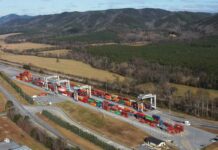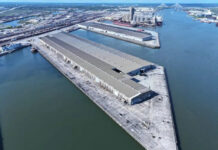The ports of Tacoma and Seattle are having a late-year surge. For the first 10 months of the year, combined statistics show, total container volumes are up just 1.3 percent. But for October alone, container traffic was up 9.9 percent from the same month a year ago.
That could be a positive indicator about the health of the world economy, which would be reassuring news given some of the recent cautions and warnings about a slowdown.
It’s more likely, though, that the surge is driven by importers racing to beat the next round of tariffs and retaliatory duties to be imposed by the United States.
A telling statistic is that import container volumes at the ports were up 20.7 percent in October compared to a year ago (using same-month comparisons gets around seasonal swings caused by building holiday-sales inventory).
The ports themselves acknowledge what’s going on.
“As we approach January, the uncertainty of the tariffs is driving our import customers to re-examine their supply chains and explore new strategies,” said Tong Zhu, chief commercial officer and chief strategy officer for the Northwest Seaport Alliance.
Port volumes are always at the mercy of trade policies, so the heightened volatility and uncertainty in trade relations (are we making nice with the Chinese today or are we back to being mad at them?) means prospects for the regional ports in 2019 are likely to be both volatile and uncertain. Trade peace could break out tomorrow, and the tariffs could be scrapped; that can be good, bad and both. And if the international squabbles continue? The same.
For all of that uncertainty, the ports are moving ahead with projects. Commissioners from the two ports have approved a measure authorizing the chief executive to prepare a lease, bidding documents and a request for construction funds for improvements to Seattle’s Terminal 5 to allow it to handle the biggest ships.
That’s not much of a surprise. The ports have long been leaning toward the T-5 project. Meanwhile, facilities in Tacoma are getting upgrades to handle much larger container ships.
As noted by the alliance’s draft budget, “The global container shipping industry continues to struggle with imbalance in the supply and demand of vessel capacity,” with mergers, consolidation and even a few failures resulting from weak freight rates. “Carrier financials remain dismal.”
Read more on The News Tribune.





